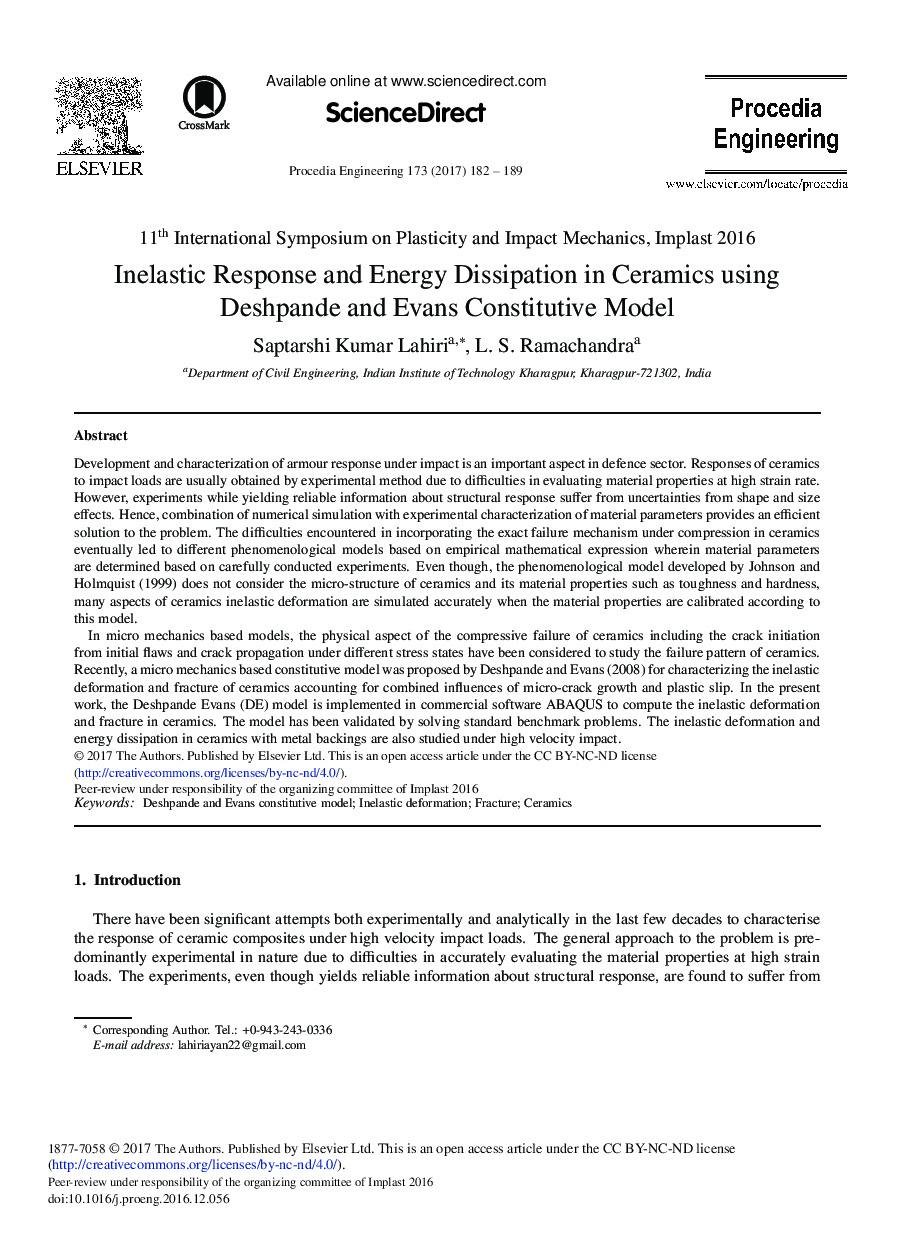| Article ID | Journal | Published Year | Pages | File Type |
|---|---|---|---|---|
| 5028296 | Procedia Engineering | 2017 | 8 Pages |
Development and characterization of armour response under impact is an important aspect in defence sector. Responses of ceramics to impact loads are usually obtained by experimental method due to difficulties in evaluating material properties at high strain rate. However, experiments while yielding reliable information about structural response suffer from uncertainties from shape and size effects. Hence, combination of numerical simulation with experimental characterization of material parameters provides an efficient solution to the problem. The difficulties encountered in incorporating the exact failure mechanism under compression in ceramics eventually led to different phenomenological models based on empirical mathematical expression wherein material parameters are determined based on carefully conducted experiments. Even though, the phenomenological model developed by Johnson and Holmquist (1999) does not consider the micro-structure of ceramics and its material properties such as toughness and hardness, many aspects of ceramics inelastic deformation are simulated accurately when the material properties are calibrated according to this model.In micro mechanics based models, the physical aspect of the compressive failure of ceramics including the crack initiation from initial flaws and crack propagation under different stress states have been considered to study the failure pattern of ceramics. Recently, a micro mechanics based constitutive model was proposed by Deshpande and Evans (2008) for characterizing the inelastic deformation and fracture of ceramics accounting for combined influences of micro-crack growth and plastic slip. In the present work, the Deshpande Evans (DE) model is implemented in commercial software ABAQUS to compute the inelastic deformation and fracture in ceramics. The model has been validated by solving standard benchmark problems. The inelastic deformation and energy dissipation in ceramics with metal backings are also studied under high velocity impact.
